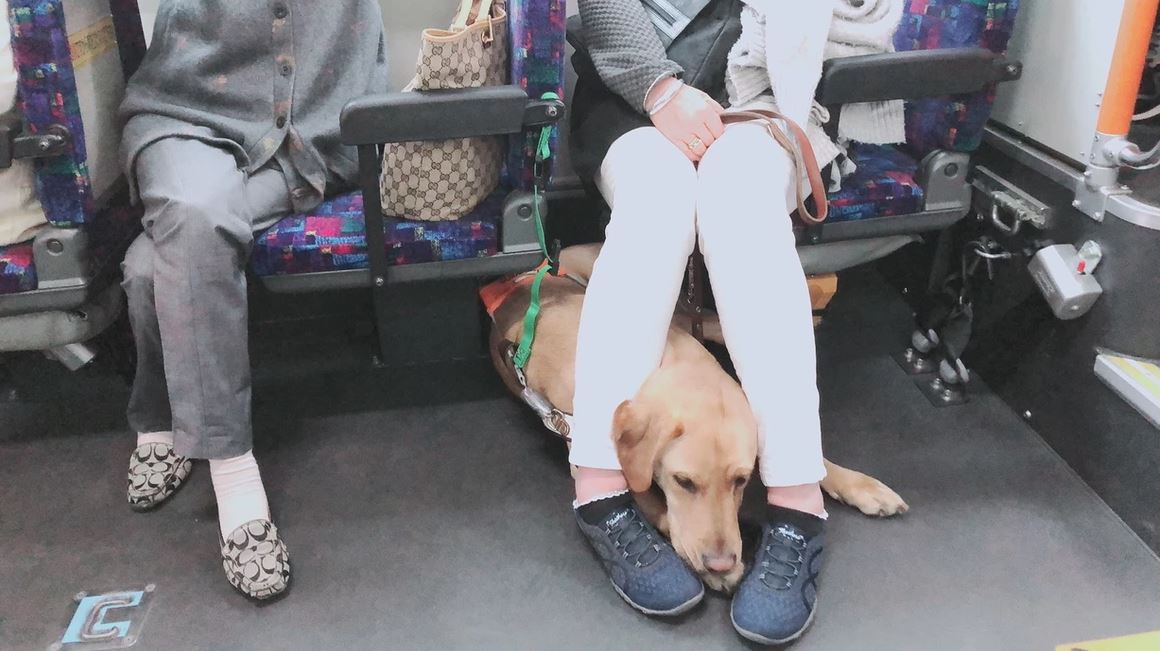Country: Japan
Getting Around Japan
Time to read: Approximately 6 minutes
This information is specific to travelling around Tokyo/urban areas. If anyone has other experiences, please share them on the TravelPaws Facebook group
You can get around Japan on flights, buses, trains and taxis. We have listed some tips below for all these modes of transport.
We have also identified some general points to consider.
Crowds
Watch out for bicycles ahead and behind you, cars ahead and behind you, crowds, crowds and more crowds.
Be prepared for small spaces, narrow paths and no paths, people looking down at their feet — basically go with someone sighted and avoid peak hour if you can!
A lot of places in Japan have just escalators (not lifts or stairs) - do your homework before you go out if your dog doesn't travel on escalators
Your dog's seatbelt harness can be used in Japan.
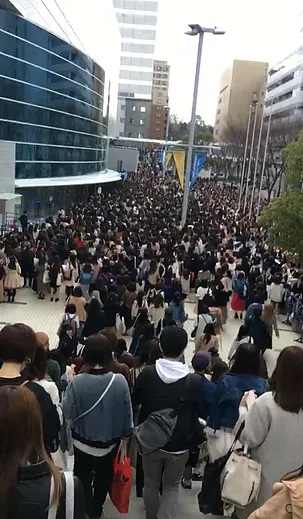
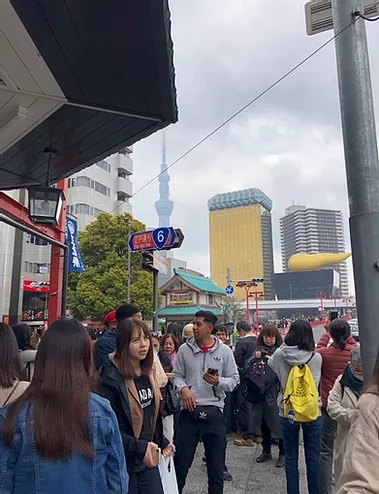
Flights
If you fly into terminal 2 at Narita airport, the closest patch of grass for toileting is between the terminal and the carpark (it's over 2 lanes of busy traffic without a crossing so you will need to go with someone sighted).
I don't have any experience to draw on for domestic flights. Next mission! Would anyone else like to share something in our Facebook Group.
Be prepared for a tired puppy at the end of the flight.
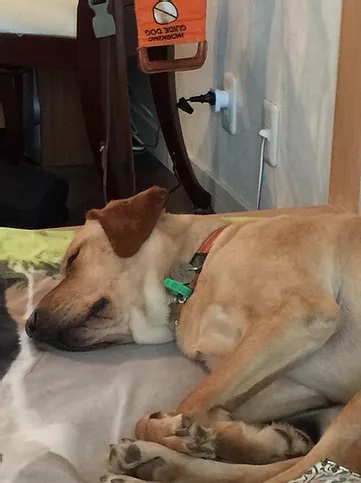
Buses
Space is a premium on Japanese buses- for you and your dog. Also if you can find a spare seat, you will discover that they are not made for Western sizes!
- I tried many ways of positioning Nixon, to be safest for him, and out of the way of others
- If you can train your dog to sit down either between your legs or by the side of your legs that would be a plus, rather than lying down, where they take up more room in the aisle
- The best position I found was turning in my seat to face the aisle with Nixon between my legs under my seat.
See the gallery below for examples and visual descriptions.
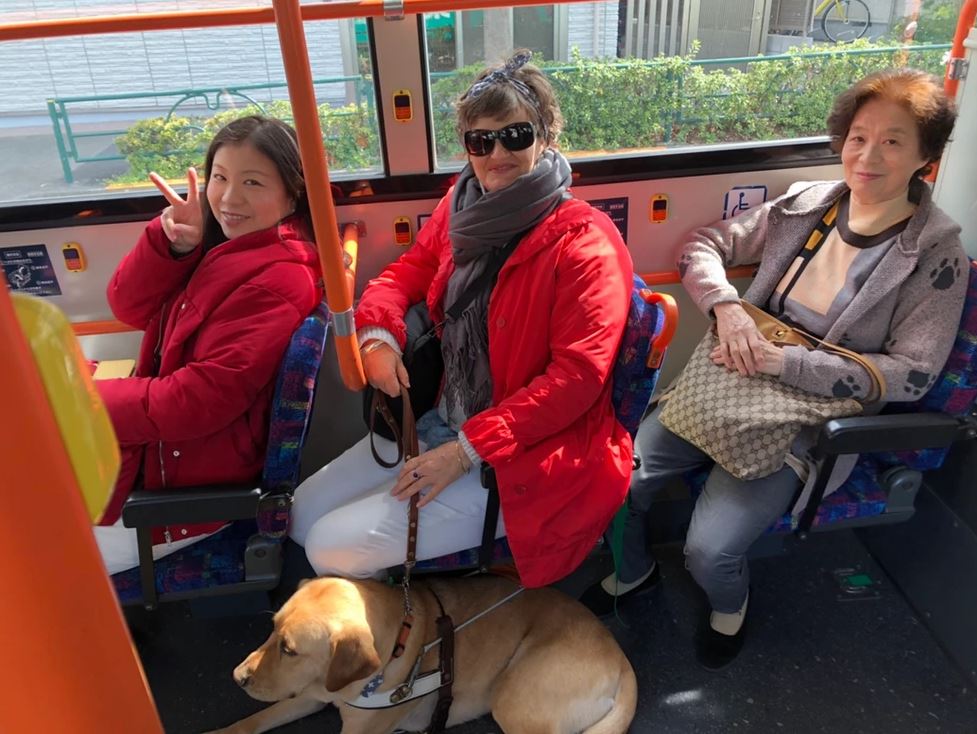
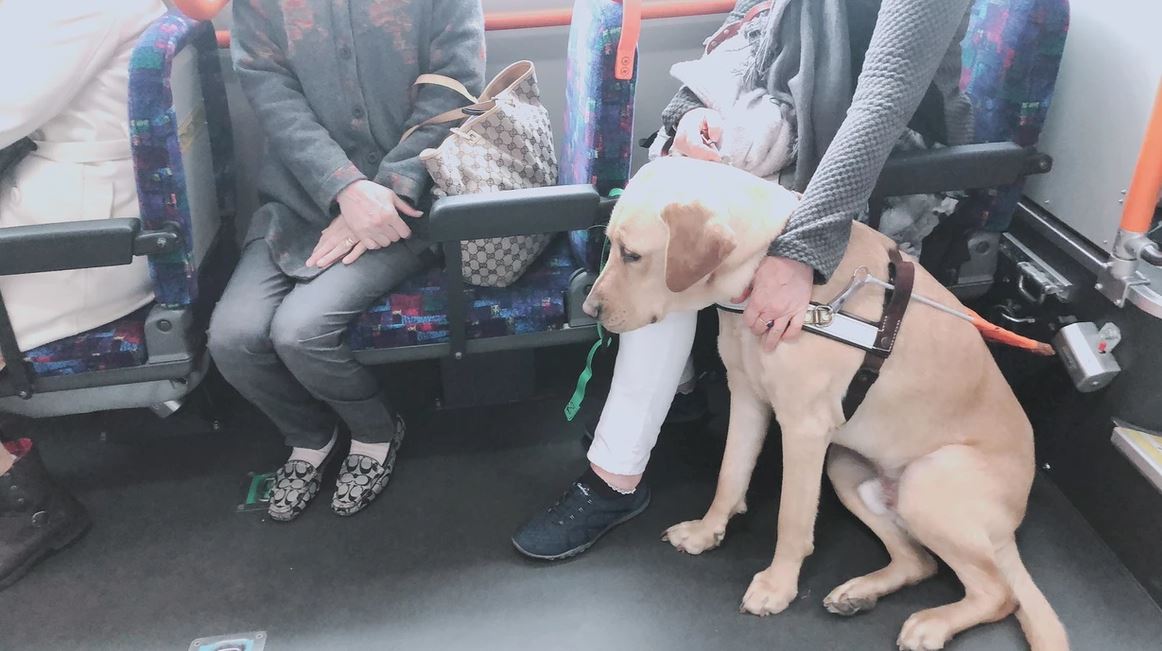
Train travel
- Ask the staff for help embarking and disembarking the train as there are usually masses of crowds to deal with and it can be quite stressful
- If you ask the staff for help (see Japanese Handy Language), they should have someone to meet you at your destination when you disembark.
- Stand or sit where you have good access to the doors to disembark when you need to — it's a bit of a rush. There is a disabled seat not far from the exit on all trains
- If there are spare seats, it is best to sit your dog in between your legs or on the side of your legs not lying across your body taking up three seats
- Be careful not to burn your dog with the heater that blows hot air from underneath the seat in winter
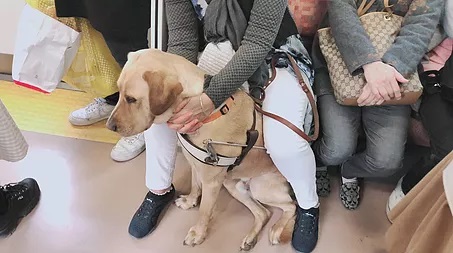
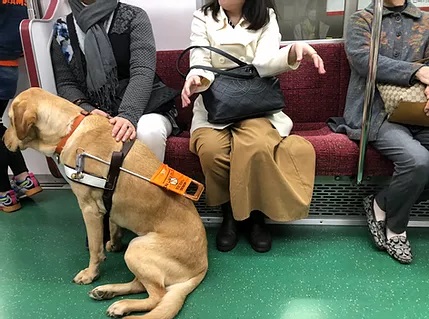
At the station
Should you choose to forego the assistance of platform staff:
- When it's available, you need to either show your ticket to the staff at the ticket window, so they can let you through without going through the turnstiles
- Otherwise use the widest turnstile available. Put your ticket in the slot as you approach, walk-through with your dog and pick the ticket up on the other side - then the gates won't close on you or your dog
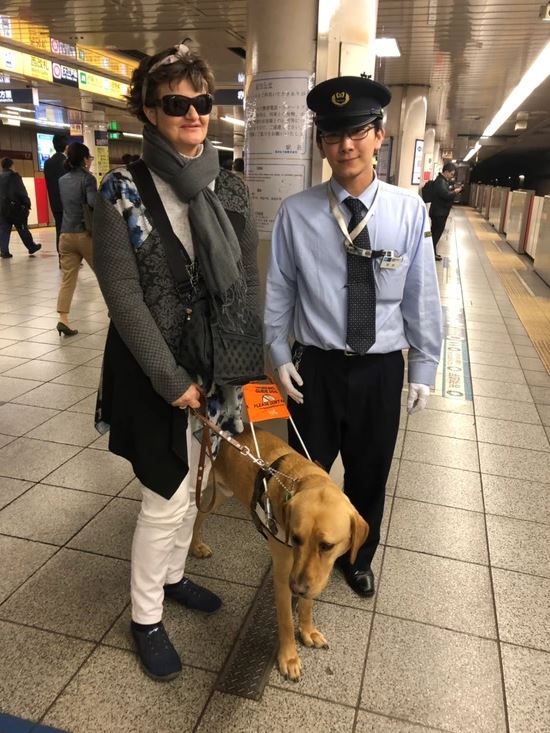
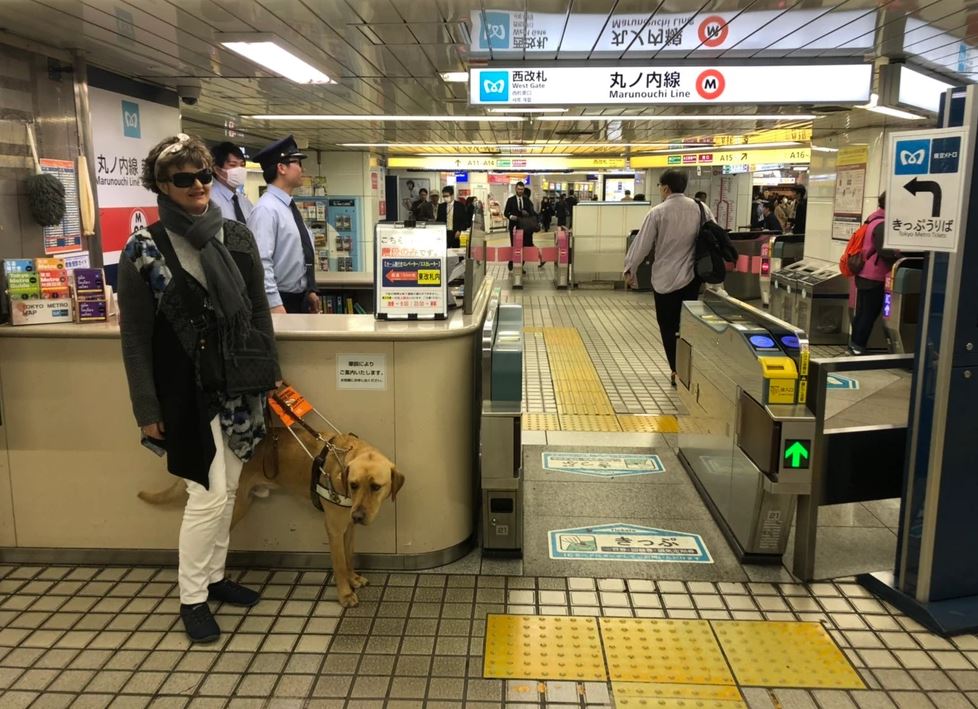
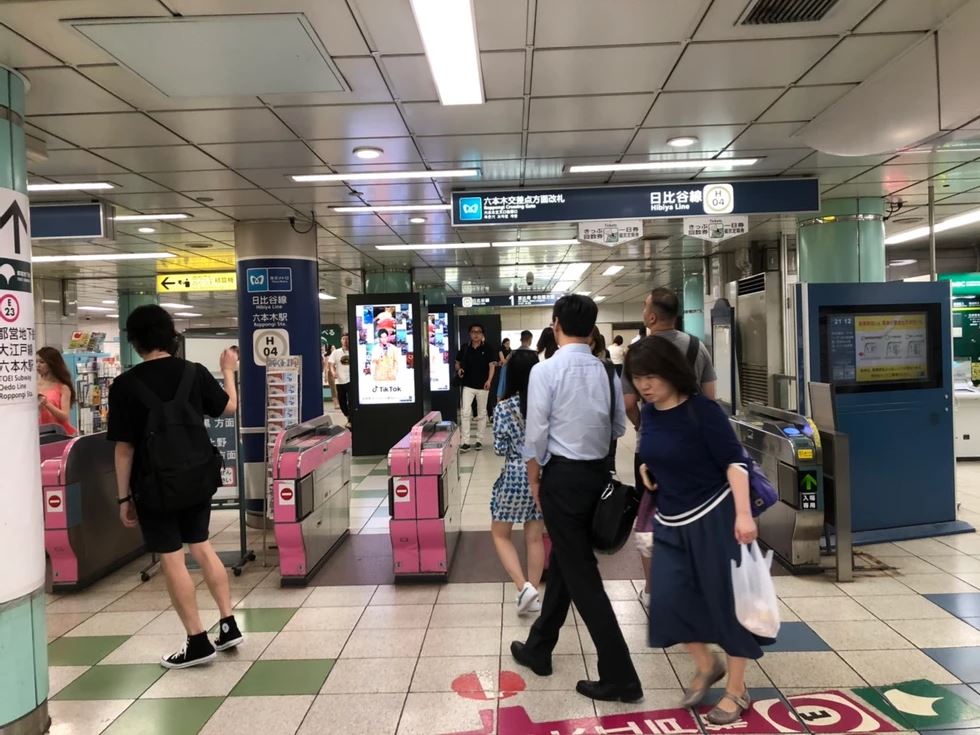
Taxis
In Japan, the taxi door opens and closes automatically by the control of the driver. Don't touch your door - that is their gig!
- You will enter the taxi at the left rear side of the car (the door will automatically open)
- Sit in the back of the taxi with your dog
- If you are travelling alone, get in first and then shuffle your legs over to the right foot-well leaving a space for your dog to hop in, in front of you on the left
- If you go with someone else let them slide in first behind the driver
- There is usually plenty of room to leave the dog harness on, because the front seat is usually pushed right forward by the driver
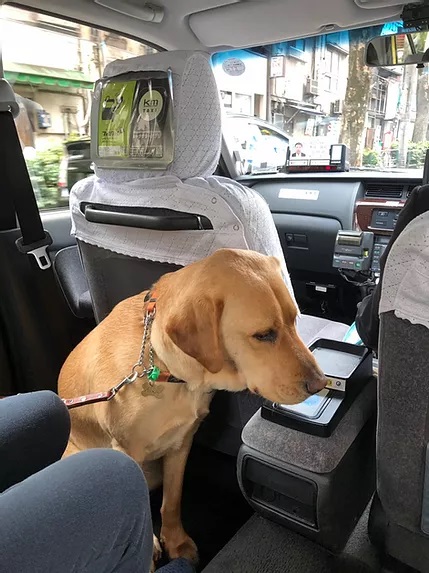

Respect for Elders
The elderly in Japan are highly respected by everyone. Their needs are considered at all times.
Because of this, they are not accustomed to getting out of the way, so I recommend you walk with a sighted person wherever possible.
We share priority seats with the elderly - you might not get a seat!

